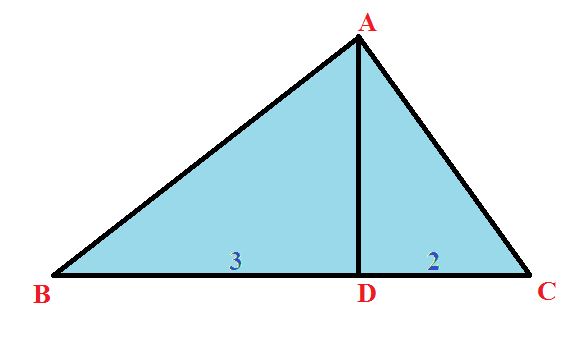Triangle
Given triangle , is perpendicular to such that and . If , then the area of the triangle is:

The answer is 15.
This section requires Javascript.
You are seeing this because something didn't load right. We suggest you, (a) try
refreshing the page, (b) enabling javascript if it is disabled on your browser and,
finally, (c)
loading the
non-javascript version of this page
. We're sorry about the hassle.
Let AD =x, / BAD = α & / CAD = β. Then tan(45°)= tan(α+ β) = tan(α)+tan(β)/(1-tan(α)tan(β).. In other words, tan(α)+tan(β) = 1-tan(α)tan(β) or 3/x + 2/x = 1 - 6/x² 0r 5/x =1 - 6/x² or x² - 5x - 6 = 0 from which the only admissible value is x= 6. Hence, Area of Tr. ABC = (5x6)/2 = 15 s.u.